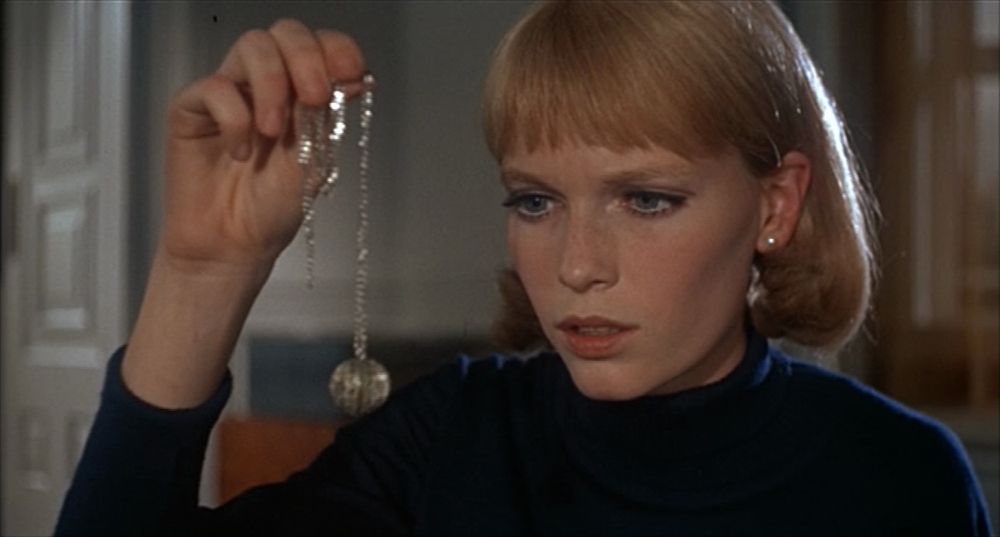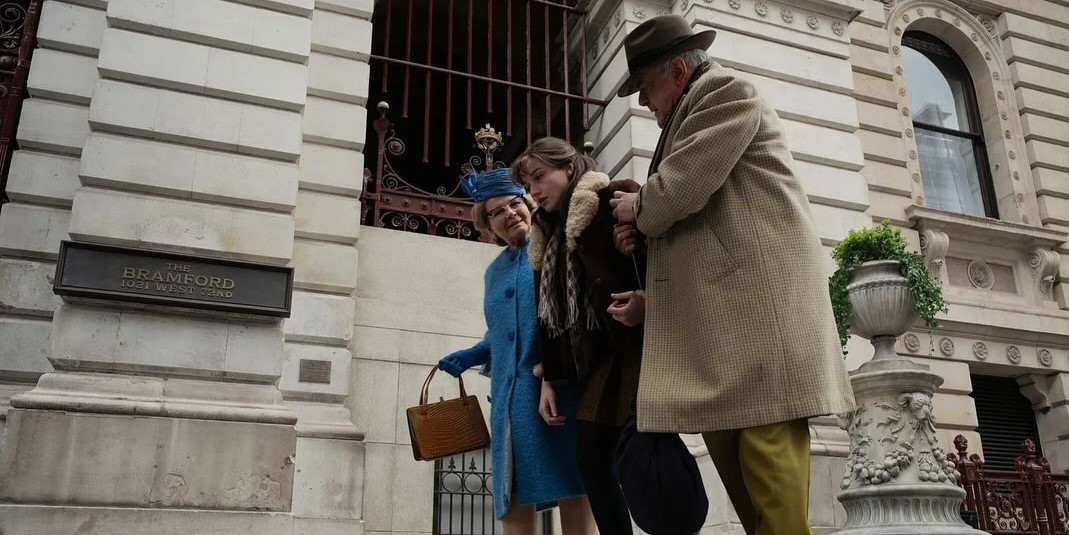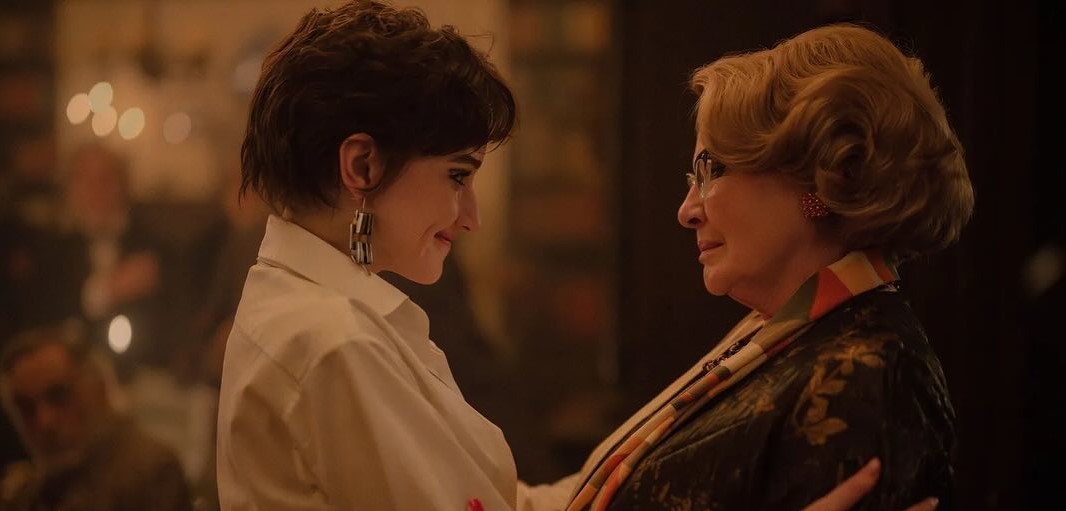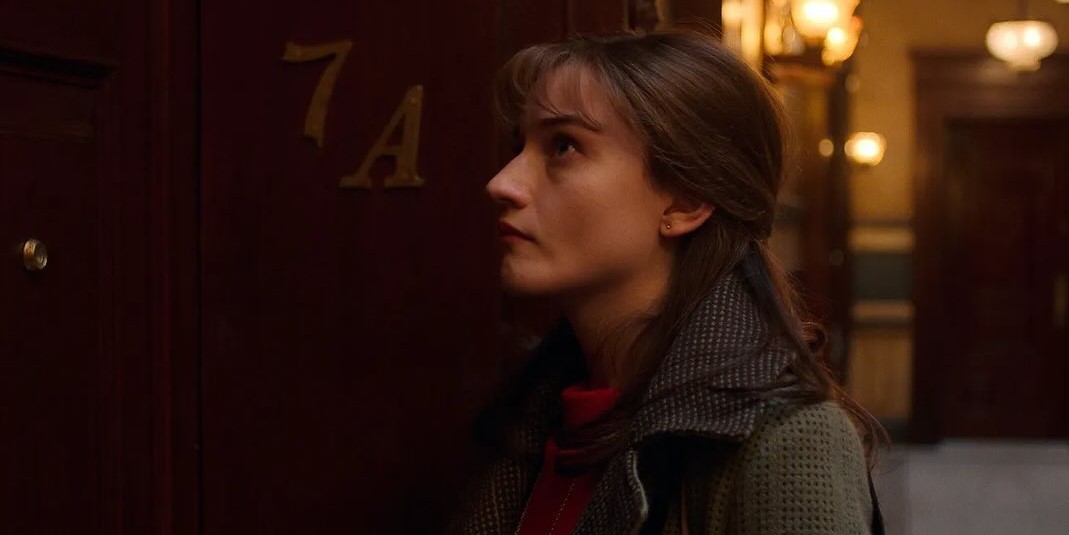With Natalie Erika James at the helm, ‘Apartment 7A’ revolves around Terry Gionoffrio, a dancer in 1960’s New York City attempting to make it big on Broadway. At the precipice of securing a breakthrough role, she injures her ankle during rehearsal and is forced to shift to the Bramford apartments. An elderly couple, the Castevets, take her under their wing and promise to help her restart her career. However, Terry begins to notice unnerving occurrences in the building, with the Castevets seemingly bearing ulterior motives in their aid. The horror film paints an intimate portrait of a young woman pouring her heart and soul into her work to succeed, with her subsequent supernatural trials becoming all the more harrowing.
Apartment 7A is a Prequel to Rosemary’s Baby
A prequel to ‘Rosemary’s Baby,’ ‘Apartment 7A’ expands on the horror classic’s story by creating its own backstory for one of the minor characters of the original — Terry Gionoffrio. The 1986 movie is an adaptation of a genre-defining 1967 novel by Ira Levin that created many of the satanic and cult story elements that can be observed in horror media to this day. It was adapted into a film by Roman Polanski, receiving universal critical acclaim like its source material, eventually becoming a seminal work.

‘Apartment 7A’ features an original story written by Skylar James, who also contributed to the screenplay alongside Natalie Erika James and Christian White. Yet ‘Apartment 7A’ still inhabits the world of ‘Rosemary’s Baby,’ using many of its recognizable characters and storytelling elements. With the original work having influenced a multitude of satanic horror and cult films over half a century, many plot points of ‘Apartment 7A’ may seem familiar, most of all with ‘Rosemary’s Baby’ itself.
Apartment 7A Takes a Different Approach to Agency Compared to Rosemary’s Baby
In ‘Rosemary’s Baby,’ Terry Gionoffrio is a troubled woman the protagonists meet in the laundry room of Bramford. She tells them that the Castevets had helped her with her drug problems, and the interaction serves to build tension as there seems to be something clearly wrong. With a predetermined endpoint for its protagonist, ‘Apartment 7A’ explores the history of Terry Gionoffrio, using the canvas of Ira Levin’s haunting world to tell its own story with a significant difference introduced by the writers.

In the original, a source of slowly building dread and horror is Rosemary losing agency over her own body. Up until the end, she and the audience are unsure whether there is a sinister conspiracy in place or whether she is hallucinating and becoming susceptible to paranoia. A similar plotline unfolds in ‘Apartment 7A,’ with a difference in the protagonist’s agency over her body and future. Looking back at ‘Rosemary’s Baby,’ the writers realize that they are treading sacred ground so to say, but reevaluate the narrative through the modern lens and contemporary issues.
“For me, there’s conversations to be had about foundational trauma, grooming, cults, and victimization. These are very real and prevalent issues,” said Skylar James in an interview with Horror Buzz. Thus, the subject of these issues, Terry Gionoffrio, is depicted as an ambitious and undeterred woman. Through her, the creatives of ‘Apartment 7A’ continue exploring the themes of body horror, women’s rights, and socio-political issues. James finds it amusing to think that the devil may mistakenly choose a vessel for his seed only to discover that she does not want to have a baby at all.
Apartment 7A Seeks to Depict Women in a Different Light From the Original
The writers behind ‘Apartment 7A’ sought to alter the definitive narrative of victimization suffered by the protagonist in comparison with ‘Rosemary’s Baby.’ “In the original, Rosemary is a victim. It’s a wonderful and beautiful film, but Rosemary is a victim,” reiterated Christian White in the aforementioned interview. “I never think of Terry as a victim. Bad things happen, but she’s also driving her own story. As she gets closer to her goal, she’s continually forced to shed more of herself and sacrifice more. There’s something about that agency and exploring a woman’s agency that was a reason to make this now.”

In ‘Apartment 7A,’ Natalie Erika James and the creative team reimagine the world of ‘Rosemary’s Baby,’ exploring it through the lens of Terry Gionoffrio’s driven character. By exploring themes of women’s rights and victimization through a modern lens, the film transforms its protagonist from a passive victim into a fierce woman fighting for control over her future. With its chilling atmosphere and timely message, ‘Apartment 7A’ stands as both a homage and a fresh take on a horror classic.


You must be logged in to post a comment.